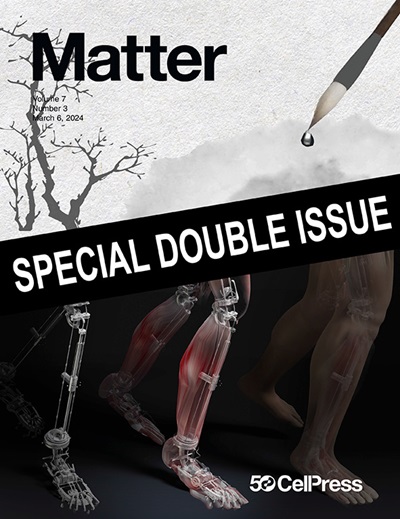CoRE MOF DB: A curated experimental metal-organic framework database with machine-learned properties for integrated material-process screening
IF 17.3
1区 材料科学
Q1 MATERIALS SCIENCE, MULTIDISCIPLINARY
引用次数: 0
Abstract
We present an updated version of the Computation-Ready, Experimental (CoRE) Metal-Organic Framework (MOF) database, which includes a curated set of computation-ready MOF crystal structures designed for high-throughput computational materials discovery. Data collection and curation procedures were improved from the previous version to enable more frequent updates in the future. Machine-learning-predicted properties, such as stability metrics and heat capacities, are included in the dataset to streamline screening activities. An updated version of MOFid was developed to provide detailed information on metal nodes, organic linkers, and topologies of an MOF structure. DDEC6 partial atomic charges of MOFs were assigned based on a machine-learning model. Gibbs ensemble Monte Carlo simulations were used to classify the hydrophobicity of MOFs. The finalized dataset was subsequently used to perform integrated material-process screening for various carbon-capture conditions using high-fidelity temperature-swing adsorption (TSA) simulations. Our workflow identified multiple MOF candidates that are predicted to outperform CALF-20 for these applications.

CoRE MOF数据库:一个精心策划的实验金属有机框架数据库,具有机器学习特性,用于综合材料工艺筛选
我们提出了一个更新版本的计算就绪,实验(核心)金属有机框架(MOF)数据库,其中包括一套精心设计的用于高通量计算材料发现的计算就绪的MOF晶体结构。与以前的版本相比,数据收集和管理程序得到了改进,以便将来能够更频繁地更新。机器学习预测的属性,如稳定性指标和热容,都包含在数据集中,以简化筛选活动。开发了MOFid的更新版本,以提供有关金属节点,有机连接器和MOF结构拓扑的详细信息。基于机器学习模型对mof的DDEC6部分原子电荷进行了赋值。利用Gibbs系综蒙特卡罗模拟对mof的疏水性进行了分类。最终确定的数据集随后用于使用高保真温度-摇摆吸附(TSA)模拟对各种碳捕获条件进行综合材料-工艺筛选。我们的工作流程确定了多个MOF候选材料,预计在这些应用中优于CALF-20。
本文章由计算机程序翻译,如有差异,请以英文原文为准。
求助全文
约1分钟内获得全文
求助全文
来源期刊

Matter
MATERIALS SCIENCE, MULTIDISCIPLINARY-
CiteScore
26.30
自引率
2.60%
发文量
367
期刊介绍:
Matter, a monthly journal affiliated with Cell, spans the broad field of materials science from nano to macro levels,covering fundamentals to applications. Embracing groundbreaking technologies,it includes full-length research articles,reviews, perspectives,previews, opinions, personnel stories, and general editorial content.
Matter aims to be the primary resource for researchers in academia and industry, inspiring the next generation of materials scientists.
 求助内容:
求助内容: 应助结果提醒方式:
应助结果提醒方式:


